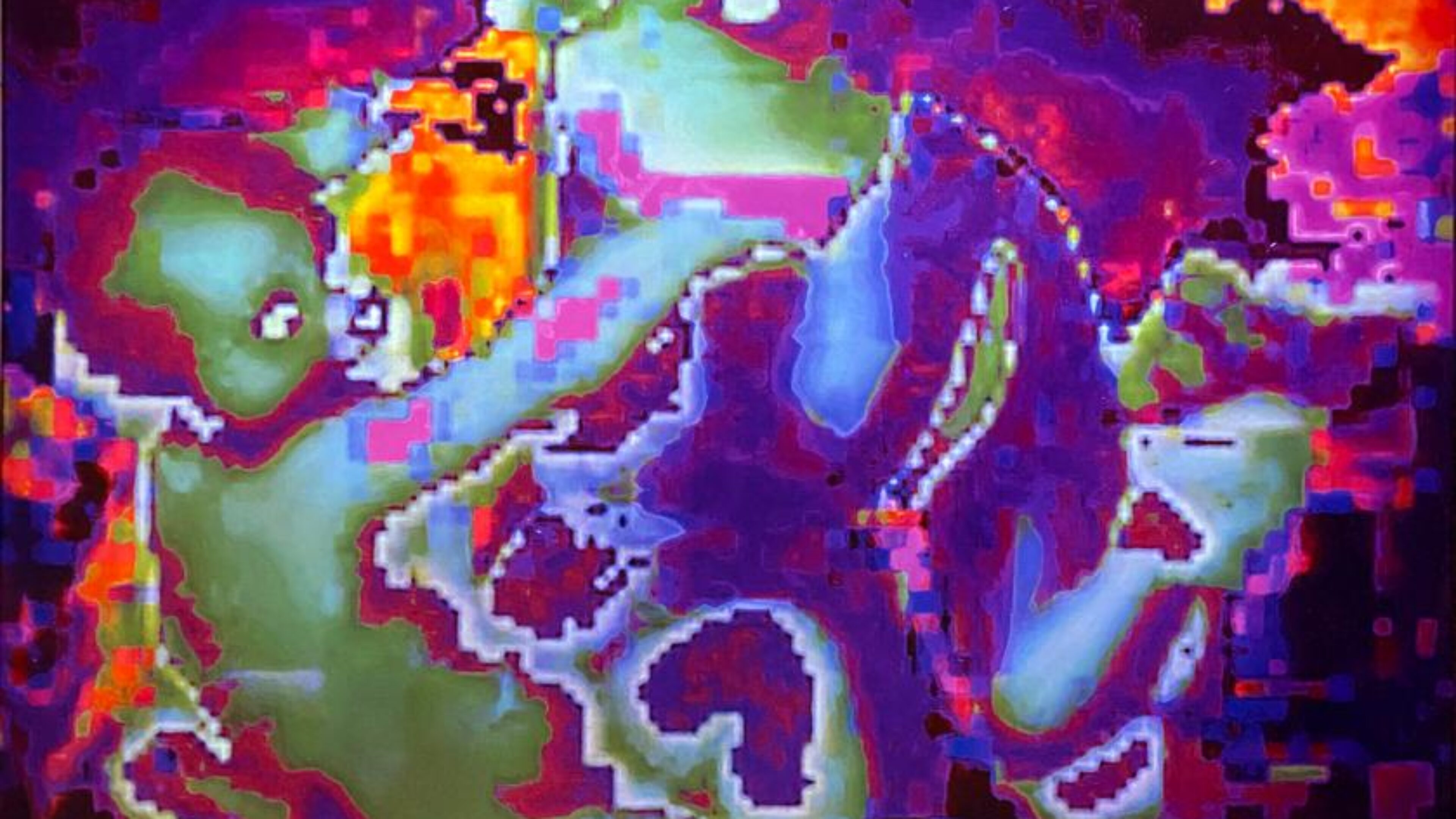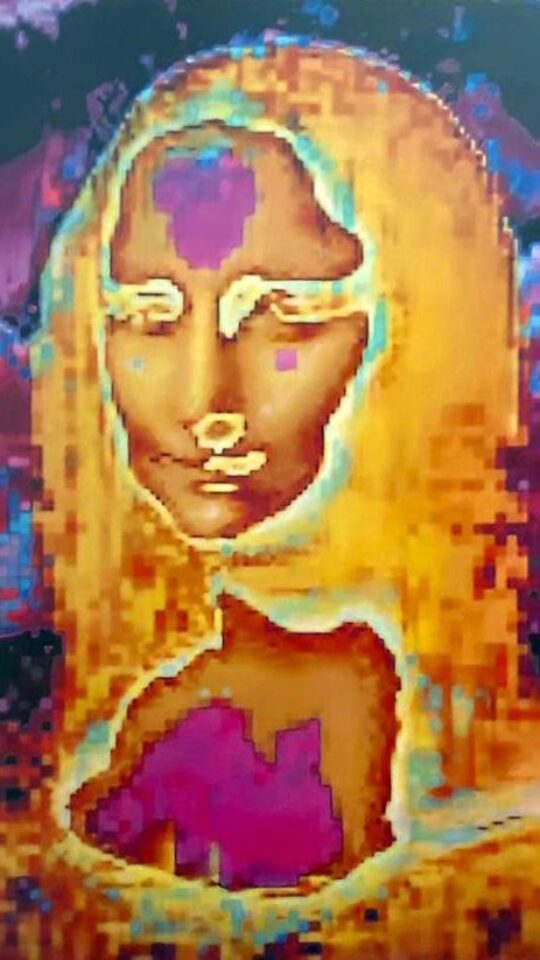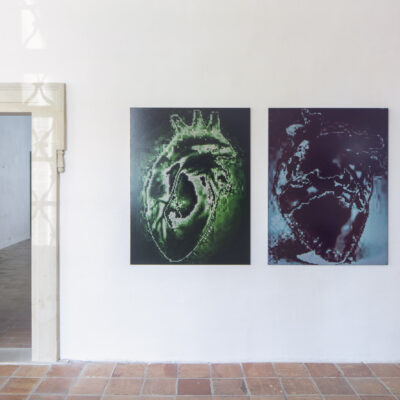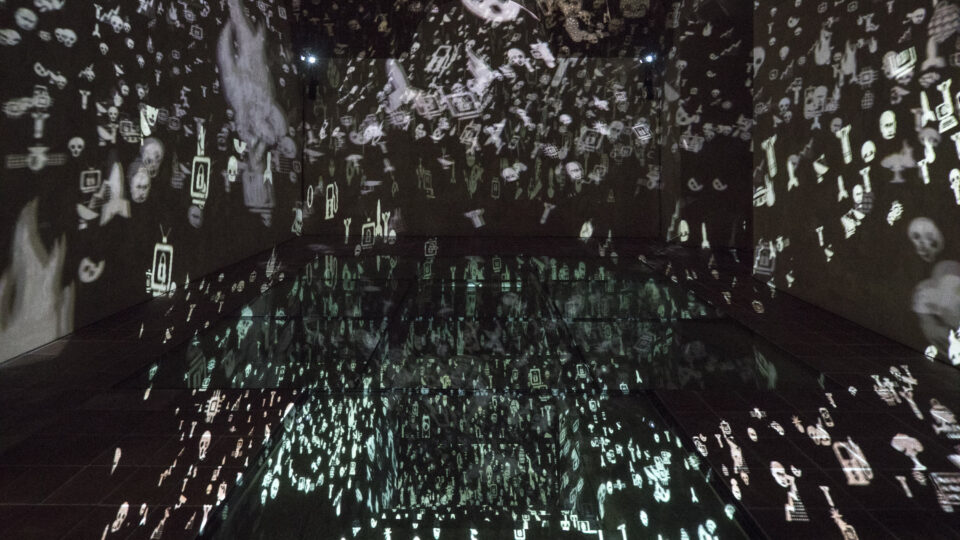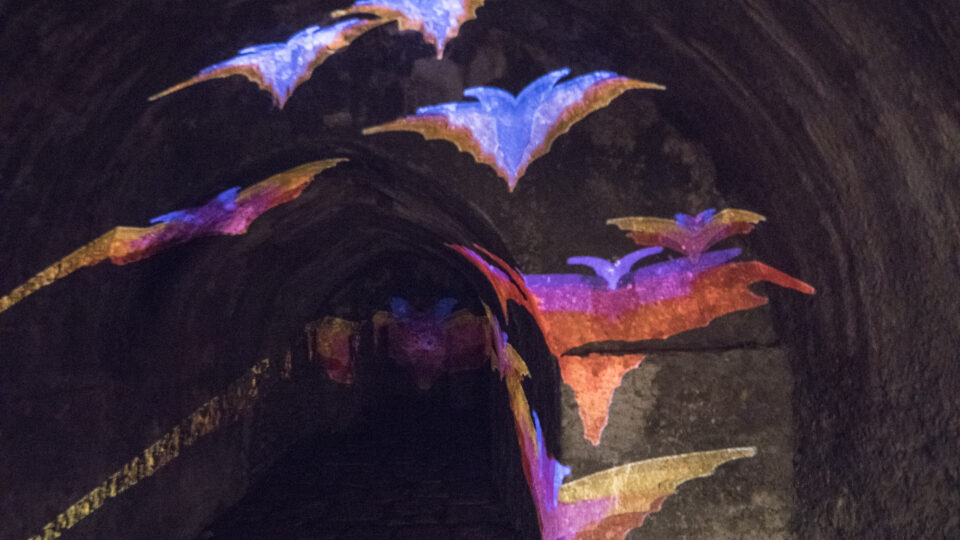The exhibition Ultima Culpa presents a carefully chosen cross-section of works by the painter and multimedia artist Kamila B. Richter from 2007 to the present. Born in Olomouc in 1976, Richter is a long-time resident of Germany, where she lives in Karlsruhe and Düsseldorf. She earned her master’s degree from AVU in Prague in 2001, and later received a doctorate from the same school. In 2000–2002, she lived in South Africa and studied at Technikon Natal in Durban. She and her partner in art and life, Michael Bielicky, have jointly created a number of projects involving the use of real-time data, which they call ‘data-based narratives’. Richter has presented her works at the biennials in Havana, Moscow, Seville and Bad Rothenfelde, at the Düsseldorf Quadriennale, and at ZKM Karlsruhe, the Palazzo Strozzi in Florence, the Museum für Neue Kunst in Freiburg and currently also the new Kunsthalle Praha.
Her fascinating work is a visionary response to rapid technological advances using a variety of artistic methods and strategies. One form is through the classical medium of painting. Her paintings manifest the changing way of depicting a real and virtual world influenced by data transfer. These paintings are based not on analog photographs as was done in the twentieth century by iconic artists such as Andy Warhol or Gerhard Richter. Instead, this multimedia experimenter uses digital images and sequences that she records using an old and malfunctioning Sony Ericsson smartphone. The telephone’s camera randomly and uncontrollably records reality in distorted raster patterns of various filters of sharpness. Richter then hyperrealistically renders the resulting psychedelic images using the ancient technique of oil painting on large-format canvases. In this way, she reflects the modern tools of the world she lives in. She captures the atmosphere and hustle and bustle of the big city, paints intimate portraits and self-portraits, and decodes the informational and disinformational reality of social networks, all the while exploring the roots of algorithms and machines that sophisticatedly but all the more fundamentally make their way into our lives.
Besides this self-contained set of ‘data’ paintings, Richter also expresses herself through video installations. In the Baroque cellar, GASK is showing her captivating InfoSpecies (2007), in which she visualises statistic data from global databases. This information is a kind of DNA for new and intangible animal species. Her statistic research produces informational vampires (Info Vampires), which feed on a human civilisation founded on consumerism, increased energy usage, more and more natural disasters and so on. Similarly, data on the growing number of inhabitants on the various continents gave birth to Chimeras of Growth. Elsewhere, she uses informational graphs whose shapes, colours and sounds define Data Demons or Web Traffic Night Moths.
Another no less unsettling project is Surfing, which Richter made with the famous multimedia artist and teacher Michal Bielicky, who has played an important role in developing and spreading the idea of multimedia art in the Czech Republic. In the 1990s, Bielicky founded the department of New Media Art at Prague’s AVU and also taught at the Media Art department at the Zentrum für Kunst und Medien (ZKM) in Karlsruhe.
The tandem installation Surfing is an immersive data projection of waves relating to today’s apocalyptic times. Richter also references current events through a unique and original typeface called FACETYPE, with pictograms of Putin, bombs, oil prices, rockets, satellites, nuclear explosions, Covid and more. Within the meditative rhythm of waves, these modern hieroglyphs invite the viewer to contemplate the news in the baths of the Jesuit College, their effect further amplified by the use of sound.
Her recent appellative work Zuck -Err- DNA (Project #13021, May, 2022) uses the movement of digital data to rearrange and modify the face of Facebook’s founder Mark Zuckerberg. The work is an animated NFT (non-fungible token) created for an exhibition at ZKM Karlsruhe. With this piece, Richter takes a critical stance towards Zuckerberg’s vision of the Metaverse as a future form of the internet in which our lives have been virtualised by the transfer of interpersonal communication into a 3D cyberspace.
Thematically, Ultima Culpa is a kind of metaphysical glitch that indirectly refers to original sin, when people ate from the tree of knowledge and thus showed their free will and equality with God, as a result of which they became mortal and repeatedly erred in their knowledge. As Richter stated in InfoSpecies, ‘All existence is evolutionarily founded on disharmony and on the destabilisation of other, evolutionarily older forms of imbalance according to basic existential instructions commanding us to seek self-realisation, self-preservation and self-multiplication by all means.’
In her interpretation, Ultima Culpa – the final mistake – thus represents the notion of submitting or transferring human knowledge to artificial intelligence and data flows, thus leading to the creation of new, intangible beings that exist outside of our control, that portend humanity’s coming transformation into an immaterial, fictive mind supported by digital technologies.
Veronika Marešová
guided tour with the curator:
Thursday 23rd June and Saturday 6th August
